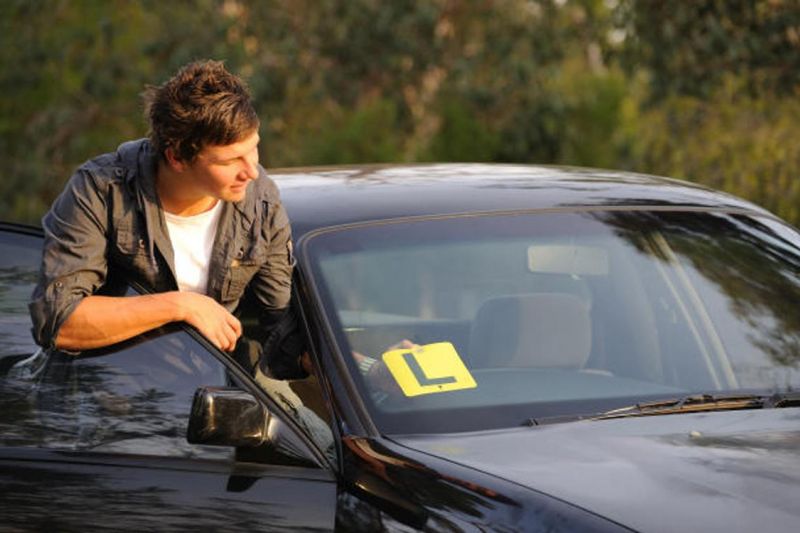There’s an old wives tale in parts of Australia that it is illegal to use cruise control if you’re an L plater.
- Learner drivers should learn all the functions of their vehicle
- It might not be advisable, but it’s not illegal for an L plater to use cruise control
- As long as the driver is obeying all the other rules, it’s fine
There is no legal suggestion that is the case. In fact, when it comes to driver safety and the safety of all road users, it could be seen as a good thing for learners to use cruise control.
Cruise control was designed essentially to make longer distance driving less fatiguing, with the upside being that a motorist would be able to get out at their destination without having broken any laws for speeding, and with a relaxed air about them because they would not have had to do any needless worth with their right foot.
In modern cars, though, cruise control systems vary greatly, and with the ongoing push for even-more autonomous vehicles that can accelerate, brake, steer, park and – if you believe Mr Musk – drive themselves entirely, the argument could be made that L platers aren’t learning to drive, rather than to co-pilot a vehicle.
If you’re not aware, there are different types of cruise control. Here’s a layman’s rundown.
The most common and most basic type will allow you to set a speed at which you want to travel, and the car will maintain that pace (within reason).
A more advanced type of cruise control is adaptive or radar-based cruise control, which allows a driver to set a distance that they’d like to maintain between their own car and the car ahead. If the vehicle in front slows down or brakes heavily, the following car should essentially mimic the motions of the lead car.
Now, there are differences between adaptive cruise control systems, including that some have what is known as ‘traffic jam’ or ‘stop-and-go’ technology, which will essentially allow the car to come to a complete stop and then restart without any intervention from the driver.
Other versions require the driver to hit a button on the steering wheel or tap the accelerator to recommence at the original set speed (though, in traffic, the car will still judge what speed it should drive based on the pace of the vehicles ahead).
And there is yet another type of adaptive cruise control that will – rather unnervingly – cut out when the speed dips to a certain point. There’s nothing quite like finding yourself driving along a multi-lane road and relying on the car to maintain your speed and distance, only for it to decide that it doesn’t operate at speeds lower than 30km/h, as has happened to me before.
Other cruise control systems can even adapt their speed to the speed limit signs, simply by hitting a button on the steering wheel. And there are even some that will automatically adjust to the signposted speed limit for you, without an intervention (this is typically known as Intelligent Cruise Control).
And there are newer cars with cruise control systems that are linked to mapping data, and will alter the speed of the car based on where the map thinks you are. I’ve had one of those fail, too – driving at the 80km/h speed limit in a tunnel in Sydney, the luxury car I was in decided to think it was driving on the surface streets above, slamming on the brakes as the car “thought” it was in a 40km/h school zone.
Further, some new vehicles may have unrefined “smart” cruise control systems that will slow the car down for corners or bends in the road, even if the signposted suggested speed limit is higher than the speed you’ve set.
And these apparently high-tech systems can still get it wrong. I’ve been in cars that have indicated a speed limit on the driver info screen of 110km/h, yet the actual limit on the residential street I was driving was 50km/h.
On the plus side for modern cruise control systems, many now offer a speed limiter that will allow the driver to set a speed that they do not want to exceed. For L-platers and P-platers alike, that could be a terrific bit of tech to ensure they do not fall foul of the law. Check out our speed limits for L and P platers story for more information.
Indeed, there are some scenarios that peak bodies suggest drivers shouldn’t use cruise control. The Royal Automobile Association of South Australia suggests that best practice would be to NOT use cruise control when the speed limit is 60km/h or under, when negotiating bends, or when you’re sleepy.
So, no, it is not illegal for a learner driver to use cruise control. But it will be up to that L plater, and the person sitting alongside them – be that a parent, sibling, relative, or driving instructor – to ensure that it is used correctly, safely and smartly.
Not intended as legal advice. Check with the relevant roads authority in your state or territory.

